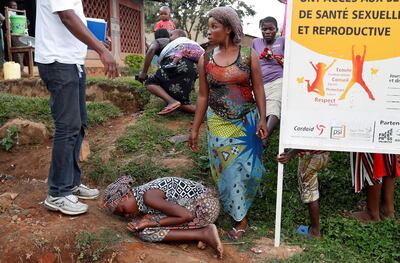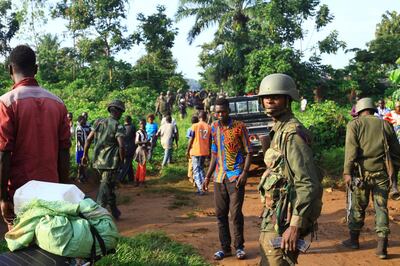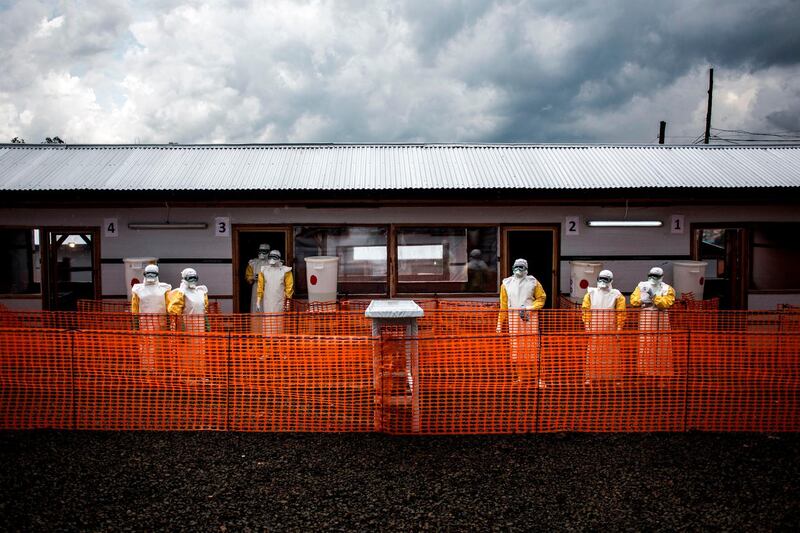An extremely poor region in the east of the Democratic Republic of the Congo is experiencing the second-worst Ebola outbreak in history. Attracting little international attention, the disease has killed more than 630 Congolese since August last year, as it creeps steadily towards the densely populated city of Goma on the Rwandan border. Local and international health workers, who willingly wade into environments from which most would flee, are struggling to contain the virus, which is deadly to around half of those who contract it.
Containing and treating Ebola is not especially difficult. Doing so requires basic hygiene, the safe disposal of corpses and the swift isolation of patients. And yet this is the DRC’s tenth outbreak since the country’s Ebola river gave the disease its name in the 1970s.
A lack of international interest is not entirely surprising, given that Ebola was not formally recognised or named until 1976, when it killed a Belgian nun working in Zaire, as the DRC was then known. But the way the disease is approached today, including on the ground, is a clear illustration of the bluntness with which the world approaches Africa and the issues that affect the continent.

Ebola swept through Guinea, Sierra Leone and Liberia in 2014, overwhelming inadequate healthcare systems and leaving 11,000 people dead. A criminally slow response from the World Health Organisation prompted much soul searching within the organisation. And the world didn't take much notice until later that year, when the virus boarded a plane to the United States, carried by Thomas Eric Duncan, a Liberian citizen who was visiting his family in Dallas.
The western response exposed many of the stereotypes and assumptions that lace discussions of Africa. The continent is viewed not as a diverse group of 54 countries, each of them with a remarkable array of languages, cultures, topographies and ethnicities, but a huge, nebulous mass – one that is overwhelmingly poor, arid, dangerous and black.
Back then, as fear swept across the US, a school headmaster in Hazelhurst, Mississippi, was put on administrative leave after attending his brother’s funeral in virus-free Zambia. In New Jersey, two healthy Rwandan schoolgirls, who had travelled to the US to study, were sent home for 21 days.
According to medical consensus, white people are just as vulnerable to Ebola as anyone else. And yet it is overwhelmingly viewed as an African disease and, implicitly, as a black one, too. Whether the virus would have been eradicated by now if it had reared its head elsewhere in the world is, obviously, the stuff of speculation. However, we can say with confidence that the international community still finds it far too easy to ignore the suffering of large numbers of Africans.
The handling of the present Ebola outbreak, in North Kivu and neighbouring Ituri province, has been superior to that of 2014. The WHO was quicker to respond, plenty of international aid has arrived and been distributed. Meanwhile, authorities in the DRC are more experienced and able to cope with outbreaks than those in nations such as Liberia, resulting in the virus reportedly being contained in 10 of the 19 affected districts.
But this outbreak is still just one major urban centre away from catastrophe. And the battle to bring it under control has exposed typical local challenges.
To be clear, there are numerous unavoidable impediments to fighting Ebola in the eastern DRC. With meagre local resources, heavy equipment, including portable isolation units and refrigerators must traverse dense jungle terrain. The region is also at the mercy of armed militias, which have attacked treatment centres, sending patients fleeing into the local community.
But the main challenge facing health workers this time is a lack of trust. A survey taken recently in the area found that nearly 40 per cent of people did not have confidence in health professionals to deal with Ebola. This is not necessarily an indictment of courageous health workers, but one of decades of misrule and, at an international level, misunderstanding.
The decision by Joseph Kabila, who was then the Congolese president, to bar the region’s residents from voting in last December’s elections caused many to wonder whether Ebola had been fabricated to disenfranchise them. More than a quarter of survey respondents questioned whether Ebola was even real.
The pervasive use of hazmat suits led Dr Joanne Liu, the president of Medecins Sans Frontieres (MSF), to urge medical teams to treat Ebola patients “as humans and not as a biothreat”. Few organisations have done as much to contain this outbreak, and yet a number of MSF health centres have been attacked by local armed groups, causing the organisation to temporarily suspend operations.

Local populations are instructed to wash their hands frequently, but lack running water. Many are fearful of being confined in isolation booths. They wonder why aid has flooded in for Ebola but not myriad other deadly diseases, including malaria. There are reports of forced confinement, while health workers understandably tend to be escorted by the Congolese military – an institution notorious for its brutality.
Most egregiously perhaps, deeply spiritual communities have been forced to look on as their loved ones are doused in chlorine, swaddled in plastic, and buried without ritual or ceremony. Certain measures can be taken. Investment in local primary-care clinics – rather than the state-of-the-art urban hospitals favoured by international donors – would improve diagnostics and treatment within communities. Meanwhile, experimental vaccines should be more readily deployed.
But ultimately, the challenge of fighting Ebola boils down to a profound misunderstanding of the communities the disease most affects. Sadly, eight months into the second-worst Ebola outbreak in history, it is worth reiterating that this is not simply an African problem, but a global one.





